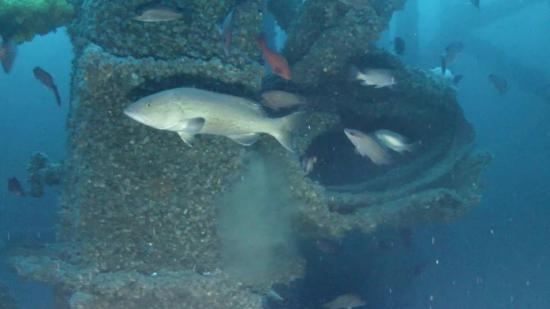November 14, 2019
Louisiana developing more inshore artificial reefs

Fish swim around part of an old offshore oil platform repurposed for Louisiana's artificial reef program. Louisiana Department of Wildlife and Fisheries photo
Fish swim around part of an old offshore oil platform repurposed for Louisiana's artificial reef program. Louisiana Department of Wildlife and Fisheries photo